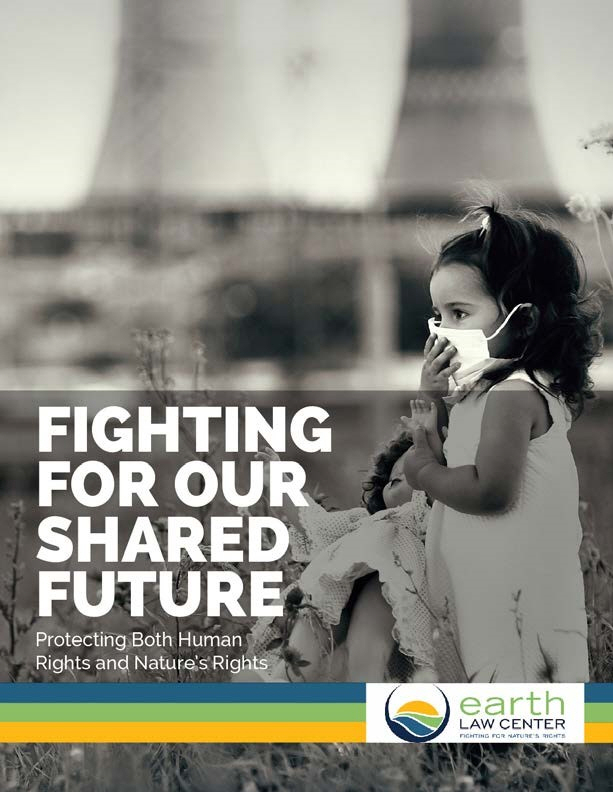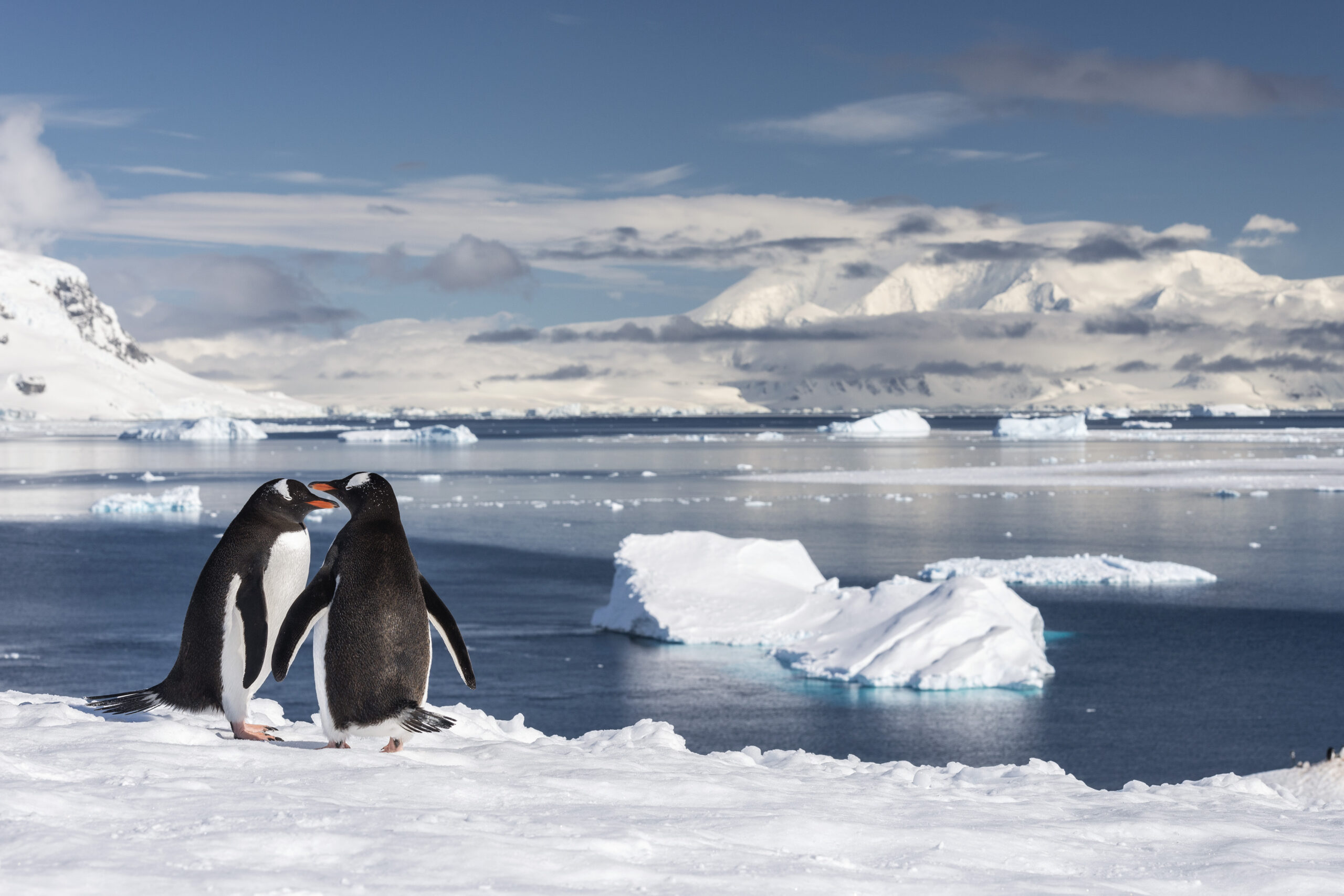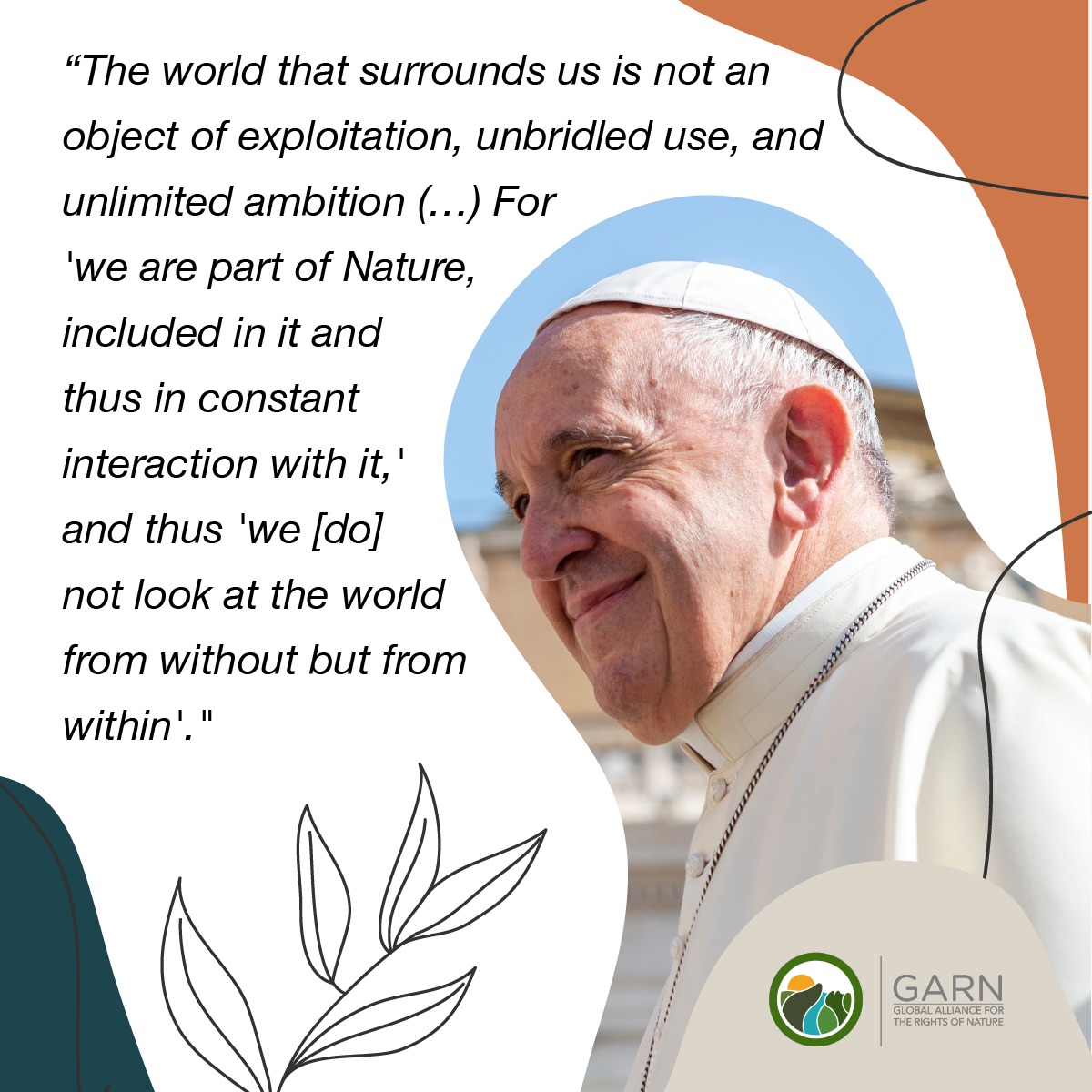 By Linda Sheehan and Grant Wilson,
Earth Law Center (ELC)
Available online at: http://bit.ly/1Ng3VyQ.
Paris, France—December 3, 2015, San Francisco Bay Area-based Earth Law Center (ELC) released a comprehensive report detailing “co-violations” of nature’s rights and human rights worldwide. “Co-violations” occur when governments, industries, or others violate both the rights of nature and human rights with the same action.
By Linda Sheehan and Grant Wilson,
Earth Law Center (ELC)
Available online at: http://bit.ly/1Ng3VyQ.
Paris, France—December 3, 2015, San Francisco Bay Area-based Earth Law Center (ELC) released a comprehensive report detailing “co-violations” of nature’s rights and human rights worldwide. “Co-violations” occur when governments, industries, or others violate both the rights of nature and human rights with the same action.
ELC’s groundbreaking report, Fighting for Our Shared Future: Protecting Both Human Rights and Nature’s Rights, and associated map are being released concurrent with the COP21 climate talks in Paris.
The report examines 100 examples of rights co-violations worldwide, and it delves into four case studies as examples: mining for iron ore, copper, and numerous other substances in Lapland, Scandinavia (“Europe’s Last Wilderness”); release of industrial pollution in Sarnia, Ontario (home to the severely impacted Aamjiwnaang First Nation); open-pit copper and gold mining in the magnificent Cordillera del Cóndor, Ecuador (the “Mirador Mine,” which would devastate local indigenous communities); and the rapid disappearance of the formerly-massive Lake Chad in Africa due to over-diversion and climate change.
As discussed, the natural world has inherent rights to exist, thrive and evolve. Humans do not “give” inherent rights to nature. Like fundamental human rights, nature’s inherent rights exist because nature exists. However, our laws ignore these core rights, and we and the Earth are paying an increasingly heavy price for that mistake. For example, scientists have found that “[w]ithout concrete, immediate actions, it is extremely likely that Earth’s life-support systems will be irretrievably damaged by 2050.” Defenders of environmental rights, however, are being harassed, arrested and even killed for their activities to prevent this damage.
“Across the globe, we injure both people and ecosystems by treating the natural world as property to fuel mythically infinite economic growth,” states ELC Executive Director Linda Sheehan. “These injuries increasingly represent simultaneous violations, or ‘co-violations,’ of human rights and nature’s rights. We must reverse this trend by evolving our laws and courts to recognize that our well-being is inextricably linked with the Earth’s.”
Among other conclusions, the report finds that:
- In over half of the cases compiled, the state was implicated as a perpetrator of rights co-violations, either alone or with industry. This finding is consistent with United Nations studies.
- Over 60 percent of the co-violations compiled involved extractive industries and energy production, which accounted for almost 60 percent of the environmental defender killings reported in these cases.
- The sources of co-violations are rarely addressed adequately, if they are addressed at all.
- We cannot protect human rights without also addressing the planet’s own right to a healthy climate.
- Adoption at the local, national and international levels of enforceable laws recognizing the inherent rights of nature, as well as U.N. adoption of the Universal Declaration of the Rights of Mother Earth (UDRME).
- Creation of courts to hear and rule on nature’s rights violations, including co-violations with human rights, with swift implementation in the interim of International Rights of Nature Tribunal judgments.
- Establishment of global and national moratoriums on particular sources of co-violations.
- Provision of emergency protection to at-risk environmental defenders.
- Adoption of an enforceable international climate change agreement reflecting the right to a healthy climate.
- Other actions consistent with our responsibility under the UDRME for “living in harmony with Mother Earth.”
Linda Sheehan is Executive Director of Earth Law Center, San Francisco Bay Area, California, USA where she advocates for recognition of nature’s rights in law. She brings 20 years of law and policy experience to ELC, including numerous successes in enforcing and funding environmental laws. For her efforts in “fight[ing] pollution of the Pacific and the streams and rivers that flow into it,” Linda was recognized as a “California Coastal Hero.” Linda is a member of the Commission on Environmental Law in the International Union for Conservation of Nature (IUCN), and teaches Earth Law as Summer Faculty at Vermont Law School.
Grant Wilson is Outreach and Policy Coordinator of Earth Law Center. Grant Wilson has worked to advance environmental law and policy campaigns in the United States and throughout the world. Grant has published law journal articles including “Deepwater Horizon and the Law of the Sea: Was the Cure Worse than the Disease?” and “Murky Waters: Ambiguous International Law for Ocean Fertilization and Other Geoengineering.” Grant earned a degree in Environmental Policy from Huxley College of the Environment at Western Washington University, and a J.D. with a Certificate in Environmental and Natural Resources Law from Lewis & Clark Law School in Portland, Oregon.
Prepared with Yale’s Environmental Protection Clinic, the report analyzes 100 examples worldwide of “co-violations” of human rights and nature’s rights and provides recommendations for change.




